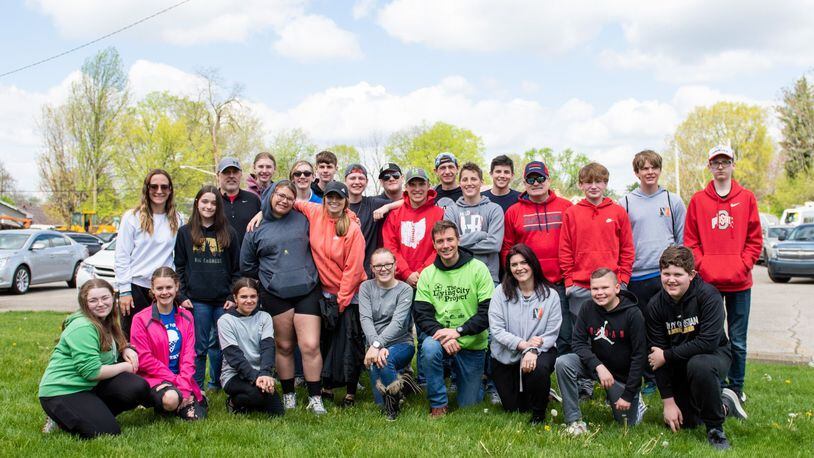Last year, the first time the cleanup was held in a one-day format, organizers gathered over 700 volunteers to serve more than 20 neighborhoods, picking up over 128 tons of trash and debris.
“The city of Dayton shared that over 50% of the tonnage of trash picked up last year actually took place on that one day in the spring last year,” said Caleb Ingram, executive director of Declare.
This year’s central hubs are Revival Center Ministries (Westwood neighborhood) and Dayton Dream Center (Burkhardt neighborhood). After the cleanup is over, the volunteers are invited to return to these hubs for an after-party providing food and fellowship.
Over 30 neighborhoods will participate this year in addition to support from local churches and businesses. The neighborhoods set to participate include Belmont, Five Oaks, Grafton Hill, Highview Hills, Huffman/St. Anne’s Hill, Miami Chapel, Old Dayton View, Roosevelt, Sandalwood Park and South Park.
“This event is very important for our neighborhoods,” said Mike Squire, city of Dayton division manager of community engagement for planning, neighborhoods and development. “It makes an enormous impact in a three-hour period on a single day. It helps give our neighborhoods a clean slate. Sometimes between litter and dumping, it becomes so overwhelming for some of our neighborhoods. The Living City Project really helps with neighborhood pride and taking ownership of your block, your street and your neighborhood as a whole.”
Squire views the initiative as a productive step toward a healthier community and relationship-building as well.
“When we’ve hosted the Living City Project over the past several years, it’s inevitable that neighbors need each other and meet other people they haven’t met before,” he said. “There’s a really great camaraderie and sense of community that’s built around this one-day event that ripples past just that one day.”
He’s also mindful of the importance of volunteerism and is hopeful added interest in the project will encourage others to join.
“Volunteer recruitment is definitely critical because some of our neighborhoods are really big,” Squire said. “City of Dayton neighborhoods are the best and they are the best places to live, and you really get to see that during this event. A lot of our volunteers haven’t been to some of the neighborhoods they go to; and they really get to see the city from a different angle, a different lens, even when they pick up trash.”
As the Living City Project continues to evolve with increasing intentionality, organizers attribute its overall growth to consistency.
“Neighborhoods want to participate because it’s something they can get behind,” said Harold Nuss, business administrator for Declare. “We’re not forcing anyone to join in our cleanup. The reason why we brand it as the Living City Project is to make sure each organization that is hosting and bringing their neighborhood there is not doing it for Declare. They are doing it because they want to improve their community.”
Ingram acknowledges the work that has been done by other local neighborhood cleanups over the years, but is grateful for Living City Project’s insistence on collaboration. Kettering Health is a notable sponsor this year.
“Any neighborhood can and has done many cleanups on their own, which can be very helpful,” he said. “But what’s unique about the Living City Project is the shared vision, excitement and encouragement that happens when you partner across the city. It really requires a lot of different parts working together to have the full impact we really can when we collaborate, which we couldn’t do if we did it separately.”
At Easter, organizers are also keenly aware of the greater significance the Living City Project has to meet the environmental and spiritual needs of the community.
“One of the taglines we’ve really pushed this year is ‘let love lead as Christ loved us,’” Nuss said. “It is our responsibility to love others. In this cleanup, loving thy neighbor and being there to support them is more than just going out to pick up trash or clean up an alley. It’s reminding people, especially those in some communities that feel isolated, that they are not alone.”
If you would like to volunteer or host, email Nuss at hnuss@declare.org. For more information, visit declare.org/livingcityproject.
About the Author
